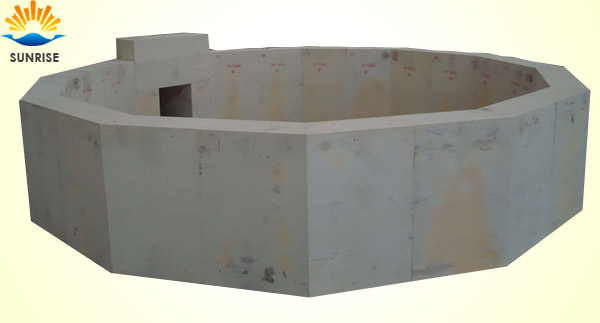
Product List
Success Case
Contact Us
- 0086 371 63838939
- 0086 371 63835539
- sales@sunriserefr.com
- tkfanyi
- No.36 Fengchan Road, Zhengzhou City

News
Selection for the Bottom Paving Brick of Float Glass Furnaces
- More related products
- Fused Cast AZS
- Fused Cast Alumina Block
- Fused Cast High Zirconia Block
- Fused Cast Skid Rail Block
The selection of refractory materials has directly impact on the service life of furnaces and quality of glass. Since large and middle-scale float glass furnaces are always insulated simply, the temperature of glass liquid is increased. So, the selection of bottom paving bricks and ramming mass is very important.

In float glass furnaces, different paving bricks are used in different parts. The general paving bricks include sintered AZS, fused cast AZS block, fused cast alumina block and sintered zircon brick.
For sintered bricks, since pores are open, the corrosive substances are easy to penetrate into the materials, which enhance the damage of refractory materials and may cause glass defects. Since the bottom is insulated, the temperature of the glass liquid is increased, which increases the convection of molten glass and accelerates the corrosion of refractory materials. In addition, during the manufacturing process, broken glass is added. The broken glass may contain metal contaminants which are brought into the furnace, deposited on the bottom after melted. The metal contaminants drill into the bricks and reduce the corrosion resistance of bricks. There may be tin in the broken glass. Tin has a low melting point of only 230℃ and high density and permeability, which can drill to the bottom of the outermost insulation layer and drop onto the bottom of the frunace.
The bottom paving brick can directly contact the glass liquid. The erosion of flowing glass liquid to the refractory materials accelerates the corrosion. According to the experiments, fused cast alumina block has the best performance with good corrosion resistance and a low potential of bubbling and stoning. The next one is fused cast AZS block 33#.
α-βfused cast alumina block and fused cast AZS block have good corrosion resistance due to its low porosity and high density,
- Read more
- How to Expand Service Life of Float Glass Furnaces
- Selection of Sealing Materials for the Bottom of Float Glass Furnaces
- The Application Of Fused Cast AZS Block In The Sidewall Of Glass Furnaces
- Refractory Selection for Oxy-Fuel Glass Furnaces
- How To Prolong The Service Life Of Glass Furnace
Leave Message
For more information on any of our products please get in touch using the form below. One of our sales team will respond to your enquiry as soon as possible.

Copyright © 2014 Zhengzhou Sunrise Refractory Co., Ltd. 豫ICP备13002126号












